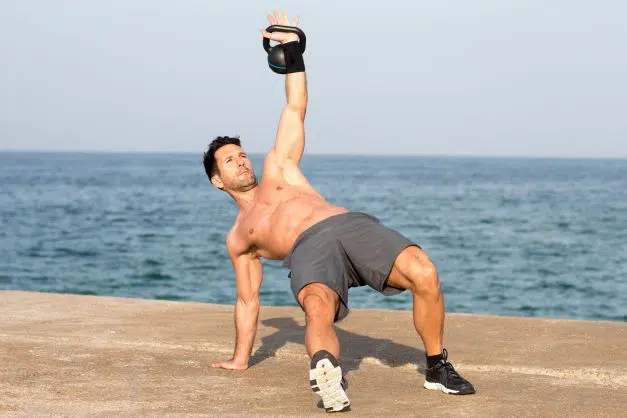By Dr. Bryan D. Royer – Sports Chiropractor
Human joints are available in various shapes and sizes, and they enable us to walk and perform the activities of everyday life. We would be inflexible and immovable if we did not have joints. However, they are frequently injured, resulting in discomfort and pain.
Knees, shoulders, ankles, and the spine are the joints that are most frequently damaged. The injuries to the knees and shoulders alone account for roughly 30 million doctor visits per year. In addition, approximately 150 million to 200 million occurrences of back discomfort are reported to the medical community each year, with many of these cases being related to joint problems. These problems can eventually lead to arthritis.
How Do Our Joints Function?
Joints are made to handle the loads applied to them while also allowing for a complete range of movement. Most joints are composed of two surfaces that meet one another and allow for movement. Hip joints, for example, are a type of ball-and-socket joint, while knee and elbow joints are hinge joints, and the spine has gliding joints.
Even though the bones that make up the joint are capable of mobility, the muscles pull the bones that are responsible for moving. Tendons are the structures that connect muscles to their supporting bones. Tendons should be robust and flexible to promote movement while preventing harm to the muscular tissues. Ligaments, which are rigid structures that link bones, aid in preventing excessive movement by stabilizing the joints. Joint surfaces are precisely dimensioned, and muscles, tendons, and ligaments are linked around each joint at designated points and specific angles. In addition, the fluid contained within most joints softens the joint surfaces, reducing friction and allowing for the joint to be used for an extended period.

What Can I Do to Keep My Joints in Good Condition?
The motions that you perform daily, adequate nutrition, a balanced exercise program, and a healthy lifestyle are all important for long-term joint health. Extra care like foam rolling or using percussion massagers can be helpful as well. It is also vital to bend and lift with care.
There are several key benefits to allowing a joint to move over its whole range of motion. Because joints do not receive direct blood supply, as do other organs in the body, the expression “Use it or lose it” applies to the functioning of the joints. Cartilage is a tough yet flexible tissue that covers the surfaces of the bones that form the joint in which it is found. Cartilage is found in nearly all joints in the human body. Imbibition is the technique by which synovial fluid is “pushed” into the joint’s cartilage, allowing it to boost the cartilage. Synovial fluid is a type of fluid that is found in joints.
Joint mobility is the only way for the pressure within the joint to provide sustenance to the cartilage to be created and maintained. And it is for this reason that movement is essential for joint health. Bruising and grinding of bone against bone in the absence of cartilage covering causes degenerative joint disease, which tears up the bones and causes cysts, bone spurs, and an excess of bone creation.
A spinal disc is composed of two parts: the annulus fibrosus, the bigger, more ligament-like section on the outside of the disc, and the nucleus pulposus, which is the smaller, more gelatinous piece on the inside of the disc. It is important to note that these two structures are largely fluid or water-based and that they derive their nourishment from movement and imbibition. Moving the spine is thus essential for maintaining the condition of the joints in the spinal column.
Joint health is also improved by eating a nutritious diet that provides enough healthy nutrients to keep the joints stable while also reducing their sensitivity to wear and tear. In addition, it is believed that leading a healthy lifestyle devoid of tobacco products and other toxins aids in maintaining enough blood flow to tissues around joints and speeds the recovery of joint injuries when they occur.

What Causes Joint Injury?
Most joint injuries develop due to excessive stresses being applied to a normally functioning joint. A single traumatic incident can cause a joint to be harmed acutely. An ankle sprain is a famous illustration of this. Ligaments on both the inside and outside of the ankle joint protect the joint. In cases where the ankle is forced inward excessively, the ligaments can be ripped. As a result, the ankle swells, resulting in bruising and discomfort. In addition, small fragments of bone and cartilage may be ripped away in some circumstances. It is also possible to suffer a fracture of the tibia and fibula (ankle bones).
Repetitive-stress injuries and cumulative trauma diseases are two terms used to describe other types of joint injuries. These injuries arise when relatively minor unusual forces are continuously applied to normal joints, causing them to become inflamed and painful. The forces exerted on joints by bad posture, incorrect joint positioning during the execution of a task, and/or poor workplace aesthetics increase the likelihood of injury.

Preventing Repetitive Stress Injury
It is particularly crucial to examine the following three fundamental factors when evaluating the influence of correct joint movement:
- When lifting an object, be certain that the greatest muscles carry out the task in the area. The greater the size of the muscle or muscle group used for lifting, the less stress is exerted on smaller, more sensitive muscles and the joint.
- To avoid remaining in one position for long periods throughout any activity, you should be able to assume various distinct postures comfortably. When you maintain a specific posture, particularly a poor one, such as remaining slightly bent forward at the waist, your muscles will become fatigued, and your joints are more prone to be hurt.
- When completing routine tasks, keep the joints used in a neutral position or approximately halfway through their range of motion. You can get repetitive-stress injuries if you operate with your joints at the ends of their motion range for an extended period. It puts a lot of stress on the joints and can cause them to wear down.

The following suggestions should be followed when carrying heavy objects:
- If you are picking anything up from the floor, keep your back straight and lift using your legs.
- When lifting, avoid bending over from the waist and instead use your lower back muscles to raise. When you are in this position, your body is more susceptible to injury.
- Keep the object you are lifting as near your body as possible.
- Your elbows should always be bent at a 90-degree angle.
- Lifting should be done with a straight neck and a raised head.

Controlling Inflammation
Nutrition plays more of a role than most realize in that chronic inflammation can determine how your body reacts to injury. Higher levels of chronic inflammation leads to more pain and eventually arthritis. It is a slow process that takes years for the effects to manifest. Try to avoid food prone to causing chronic inflammation and eat anti-inflammatory foods.
